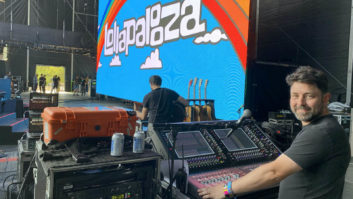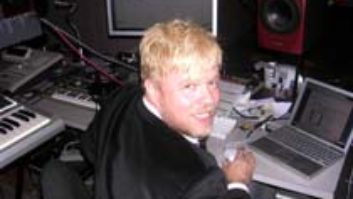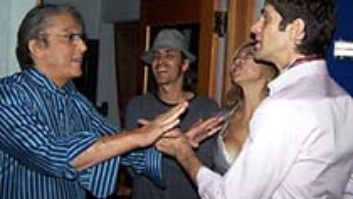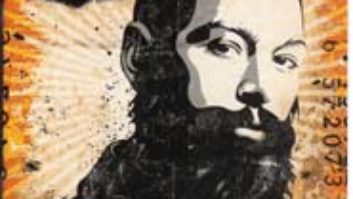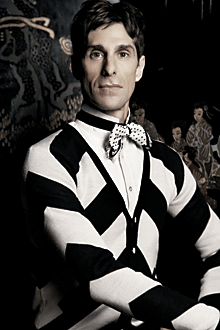

Perry Farrell thinks big. The former front man for the ground-breaking and highly influential Jane’s Addiction and, later, Porno for Pyros always thinks large-scale and beyond the immediate. A case in point is Lollapalooza, which was originally planned as a farewell tour for Jane’s Addiction in 1991. Farrell instead envisioned a grander scheme, enlisting other like-minded, cutting-edge bands and their fans for multiband festivals in large venues around the country. At the time, it seemed far-fetched, but it actually generated mainstream popularity for many alternative bands and paved the way for countless other traveling fests. Today, the scaled-back Lollapalooza exists as single, annual three-day event in Chicago, but is still considered cool, like Farrell himself. As for the impresario/alt-rock leader, he’s spearheaded various Jane’s Addiction reunions with varying degrees of success and put out one solo album under his own name, Song Yet to Be Sung, in 2001; it was a very personal work that included lyrics inspired by Jewish mysticism and exhibited a distinct social consciousness. It turns out Farrell wants to save the world.
Farrell’s latest project, a group called Satellite Party, has made one album so far called Ultra Payloaded. Musically, it spans several different genres — alternative, classic rock, funk and electronica — and features a wide-ranging roster of intriguing players, including the great guitarist Nuno Bettencourt. A deep concept album (with a fairly confusing storyline explained in the liner notes), it voices Farrell’s utopian vision and his strong concerns about the (ill) health of the planet. “First and foremost, I’m a musician,” he declares by phone from Manchester, England, while on tour with the band, “but I’m also an environmentalist and a parent. So if you’re clever and creative, you can kind of weave those things into what you really love about your life. We do, and it’s a way of having it all — playing music, having fun and making the world a better place.”
Satellite Party developed over a number of years, but coalesced into something more formal only fairly recently. Farrell says it began in 2004 as a “house record” created in his garage with engineer Marc VanGool. Initially, it was dominated by samples and beats recorded to Pro Tools through a Mackie board, with Farrell mostly working alone and occasionally with Red Hot Chili Peppers bassist Flea (a longtime friend who even toured in one Janes Addiction reunion group). However, about a year later, nothing was gelling. At that point, Farrell’s wife, Etty, urged him to breathe new life into the songs by adding more live instrumentation.
As fate would have it, shortly after this Farrell met Bettencourt, former lead guitarist for Extreme, at a birthday party for Rage Against the Machine/Audioslave guitarist Tom Morrello, and the two hit it off. “The following day, Nuno came to the garage and brought one small amplifier and a guitar, and we began to come up with polyphonic, contrary melodies,” Farrell relates. “Guitarists in rock bands usually start with the idea of coming up with a riff, but in this case we started with [the existing] drum programs and synth sounds.” The duo added more layers at their home studios, and the once-crude basic tracks were starting to be dynamically transformed. Then to take things to the next level, they decided to start drawing from the talents of other musicians.

Farrell comments, “The hardest thing for me was taking it out of a garage and beginning to bring in live players. It was very exciting and adventurous, and not only that, the sounds were out of our typical realm. Also, we were working with people outside our own clique, like Peter Hook [of New Order] from Manchester. We got bass lines from him and drumming from Thievery Corporation in Washington, D.C.,” along with contributions from the Chili Peppers’ Flea and John Frusciante, and Black Eyed Peas singer Fergie, as well as new bandmembers Kevin Figueiredo on drums, Carl Restivo on bass and Etty Farrell on vocals. Farrell continues, “We were getting inspiration from different parts of the world brought to us via an FTP site.” Producer/engineer Anthony Resta tweaked some of the tracks at his Studio Bopnique in Boston.
“It wasn’t an ego-driven record, with the guitarist or bass player having to get their stuff in,” Bettencourt adds. “It was as if the songs, as they grew, dictated where we were going; like we did the right thing for a song or the spirit of it.”
Once the project gained momentum, Farrell and Bettencourt moved around to various studios, including Henson Recording, The Village, Fox’s soundstage and Academy Award-nominated film composer Harry Gregson-Williams’ studio, all in Los Angeles. First up was Henson (formerly A&M), and in comparison to the garage and home settings the facility was quite a change, with its high ceilings, secluded vocal booths and ample space. For three months in late 2005 and early 2006, it became Farrell and Bettencourt’s base of operations as they incorporated various guitar, bass and vocal overdubs. Engineer Richard “Jake” Davies worked with them to “up the quality of the tracks and move everything forward,” Davies says. Davies’ credit list includes such adventurous artists as U2, Björk and William Orbit, so he’s used to working in unconventional ways on unusual music.
“What I inherited from Marc [VanGool] was in great shape,” he says. “He did a stellar job and Perry’s vocals were already sounding fantastic. So my role was to facilitate him, explore all his creative suggestions and make sure when he came to mix it all the options were there for him and [mixer] Steve Lillywhite.” (Actually, as he did the tracking and demo mixes with Farrell and Bettencourt, Davies didn’t know who the final mixer would be.) Sessions were tracked through both SSL J and G Series consoles direct to Pro Tools. Davies says he preferred the G because he felt it could be driven harder and could produced desirable distortion.
The next stage of the evolution of Satellite Party occurred at The Village, where Farrell and Bettencourt reviewed their tracks and added strings to some. However, when Gregson-Williams heard the orchestrated tracks at his studio, he said, “‘Man, I would love to jump in and lay some arrangements on there,’” Farrell relates. “We were very fortunate and he had a little bit of a window. It took him about three weeks to write some string lines for us. Then we went over to Fox Studios, and in one afternoon Harry nailed five tracks.”
One selection certain to pique interest and possibly controversy is “Woman in the Window.” It’s built around an unreleased Jim Morrison vocal track that the late singer’s estate gave Farrell permission to use. In fact, it’s the first unheard Morrison performance in many years. Farrell says he was especially struck by one of its lines: “Just try and stop us/We’re going to love.”
“I was involved with that,” Davies comments, “but Nuno really rearranged it in a manner that brought it to life. He and Perry put an amazing [musical] track behind it that was very true to the integrity of Jim’s voice and arrangement. It was really long, though, and between Nuno and Perry they created a more condensed version that sustained better.”
Toward the end of March 2006, the engineer and musicians toiled away furiously for 10 days at Williams’ studio, which is equipped with Pro Tools and an ICON board. Davies recounts, “We mixed everything because they wanted to present the whole album. It was more of a decision-making process of trying to finalize what was going to be in and nailing arrangements. After that, I imagine Steve [Lillywhite] picked the best tracks and they worked on those.”
Upon hearing the album, Lillywhite, then an executive at Columbia, signed the duo and set up extensive mixing sessions at the Cutting Room in New York. His involvement was short-lived, though. As Farrell describes, “We couldn’t have been happier getting signed to Columbia by Steve. Then we began mixing and got a tap on the shoulder telling us that Donny Ienner had resigned from Columbia. So there goes the president, and Steve says, ‘Don’t worry, everything is going to be okay with you guys.’ About three weeks later, I get another tap on the shoulder of news that Steve Lillywhite was out. He had begun doing the mixes with us, was so much fun to work with and such an amazing, great guy. So Nuno and I were left with the mission of having to finish the record.”
“Which we embraced,” Bettencourt interjects, “and we were kind of like inmates running it. It was nice: We sat on the Pro Tools rig and just kind of conducted it, turned things up, did all our rides and made it a very dynamic record.”
Farrell continues, “There was so much density of sound, with all the tracks going and a 30-piece orchestra and choir. You want to make them all adhere and blend with each other and not oversaturate, so mixing was definitely very difficult.” Farrell’s background as a DJ also helped guide them. “From years as a DJ, I understand that things have to develop and you can’t just stack your best songs in the front.”
“Perry is such a creative guy and he’s so far ahead of everybody else that he has to wait for everyone to catch up to him and come around to his way of thinking,” Davies concludes. “As you listen to his music you start realizing the genius in it.”

LISTEN: Must Play
Awesome
LISTEN: Must Play
Mr. Sunshine
LISTEN: Must Play
Ultra Payloaded
